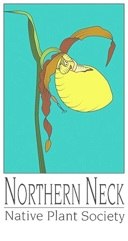Plant of the Month September 2023: Bushy Bluestem
Dense, feathery club-like inflorescences in fall
Bushy Bluestem, Andropogon glomeratus
Plant of the Month, September 2023
by Betsy Washington
Fall is the time that our warm season grasses shine in the garden by adding movement, color, and drama to the landscape. Bushy Bluestem, also called Bushy Bluebeard, is a compact, beautiful native grass often reaching only 2 – 4’ high, with attractive foliage and distinctive dense, feathery inflorescences that glow silvery white with pinkish tints in the fall light. In fact, the generic name, Andropogon, refers to the bushy beard-like inflorescences – ‘Andro’ means man and ‘pogon’ means beard. Like its close relatives, Little Bluestem and Big Bluestem, Bushy Bluestem is an adaptable warm season, clumping grass that grows in strong upright tufts with flattened green to blue green leaves. In late summer and fall the real show begins when the upright flowering stems are topped with feathery racemes that become densely bushy and club-like. The flowers are enclosed in tightly clustered bushy bracts at the top of the stems and often extend above the foliage. The silvery pink tinged white panicles are particularly showing when highlighted by the low-angled fall sun or a misty early morning. Adding to this fall show, the green to blue-green summer foliage turns warm copper, orange to rich red and persists well into winter as do the showy inflorescences.
Unlike its congeners, Bushy Bluestem prefers relatively wet conditions and is found in moist to wet sites in the eastern United States ranging from Massachusetts south to Florida and west to Texas. In Virginia, Bushy Bluestem is common in the Coastal Plain and infrequent in the Piedmont and Mountains. Look for it in bogs, seeps, interdune swales and ponds, nontidal marshes, damp to wet clearings, and wet roadside ditches. Like many other native grasses, Bushy Bluestem is a “pioneer” species meaning it’s among the first plants that seed into an environment, in this case, wet to moist disturbed areas.
This lovely grass is easy to grow but does require full sun and moist soils with organic matter. In a garden, the foliage can be cut back in early spring before new foliage emerges to tidy the garden. It is excellent grown in native, butterfly, or winter interest gardens and perfect for damp meadows and wet areas near ponds or streams or nontidal wetlands or even rain gardens where it provides structure and architectural interest and the fibrous roots help stabilize the shore. The seedheads also make excellent additions to cut flower arrangements as a bonus. When “happy”, it will naturally self-seed a bit but can be easily divided in spring to increase plantings.
Bushy Bluestem is the host for several butterfly and skipper species such as the showy Common Wood Nymph butterfly. It provides excellent year-round cover for a variety of wildlife and the seeds are eaten by songbirds and small mammals.
This lovely grass, along with many other grasses, sedges and wildflowers will be available at the Northern Neck Chapter of the Virginia Native Plant Society Fall Plant Sale beginning Sept. 16 and continuing through September 23 at Dug In Farms, 155 Fleets Bay Rd, White Stone. This is the Chapter’s only fundraiser and allows us to provide our “Guide to Native Plants of the Northern Neck" free to the public and to provide programs and field trips to promote our native flora. Be sure to come visit knowledgeable members at our Outreach tent at Dug In from 9:00 to noon each Saturday morning and pick up a free Guide along with other brochures and free seeds. We will have over 1100 native plants for sale including about 150 different species. Many of these are quite hard to find so you don’t want to miss this opportunity. In addition, our partner, Dug In Farms, will also be offering a variety of native grasses and plants so surely everyone will find the perfect plants for their own gardens!
Handsome foliage turns shade of gold to russet in fall into winter
Bushy Bluestem glows at the edge of a freshwater marsh bathed in early morning dew



